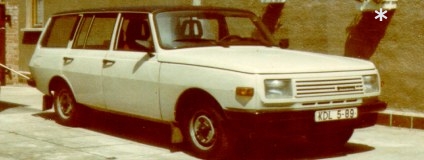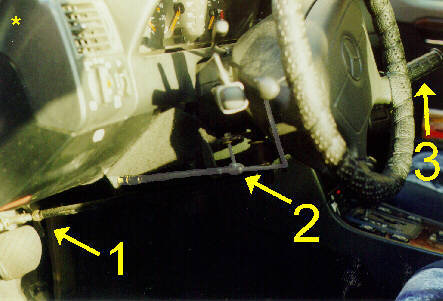

Handicap Driving? |
On the introduction page of this area I asked the question whether a life in the wheel-chair is still worth living. The answer to this question depends substantially on the personal mobility which represents a major basis for a sufficient quality of life of a disabled person. Travelling, meeting other people or getting new impressions will not only broaden the horizon but it has an immeasurable value for the special psychological situation a handicapped man (or woman) is faced with short after the accident (but not only then!), "balm to the wounded soul".
Because of the fact that busses or passenger cars of trains are sometimes not the optimal solution of traffic problems of disabled people due to organizational, technical or other reasons, the personal mobility remains an important item. The physical training in rehabilitation centres shouldn't be limited to stupid physical practises or massages but it also should include daily requirements like the question: "How can I get into the car by myself without any help?". I asked this question at the beginning of the 80's and sometimes it ended up between car and wheel-chair. But regular sports and doing it again and again provided for the possibility of travelling. At first as a guest with other drivers and since 1986 with an own car (at that time it was still the "Wartburg", a car from Eastern Germany - some technical facts: Two-stroke engine with three cylindres and 992 ccm, 50 H.P./37 kW, normal 4-speed-gearbox, ca. 4 m 20 cm long).

This type of car had been built
in variants in the Automobilwerk Eisenach for more than 20 years.
|
The technical standard solutions for the gas couldn't be utilized due to paralyzation of hands and fingers. The handling of the brakes and the gear wasn't a problem to me but the handling of the twist-grip of the throttle was a barrier for me unable to overcome. At that time no electronical equipment was available so I had to think over carefully to find a variant that had to be mechanically simple, robust and sufficiently sensible. On the following photos I'll show the solution I'm using now for 12 years and has been in operation since then only with minor changes.
 Just one look at the handicap equipment: 1 - Brake linkage; 2 - Gas lever; 3 - Brake lever. During braking the brake lever is simply pressed downwards. The gas lever transmits by an Bowden cable the power to the gas pedal. |
The first step was to determine all the motions required for the driving of a car. Which traffic situation is the most critical? To me it was the left turn on a controlled intersection: turning blinker on, going ahead, braking (after getting onto the intersection), steering - stepping on the gas (simultaneously!), handling the gearbox (in the meantime there is an automatic gearbox available) which has all to be done in less than 1.5 sec. in a harmonic sequenze. This means that one hand (in this case it is the left one) has to carry out several actions at one time: turning the blinker on, stepping on the gas, steering, whereas the right one lies one brake as a "safety reserve" to stop the car quickly if required. The special construction of the throttle lever like an arc even makes it possible by accurate adjustment to turn the blinker on with one finger of the left hand. The hand can "glide" down along the steering wheel. This solution ensures that at all actions in the car at least one hand is on the steering wheel and other required activities like turning the lights on, enabling the windscreen wiper or turning the radio on can be carried out dangerless. The transfer of the signals is performed by a bar (brakes) or by a double-wired Bowden cable (which is resistant to bending and, therefore, a sensible stepping on the gas is possible).

|
I have already been asked why I didn't use electronical equipment despite of the fact that many devices are available for that purpose. Electronical devices can have failures which can be repaired only by specialists. On my equipment simple mechanical knowlegde is sufficient to solve problems (which I had'nt to face with - toi, toi, toi). By the way, this solution is relativ cheap in contradiction to the joystick-steering with voice control being the non plus ultra on the area of control equipment of cars for disabled people now.
All in all I have to emphasize again that this equipment is a very individual solution. Every handicap is different and the equipment in the car has to be fitted individually. It depends decisivly on the disabled person himself how much imagination he can develop to find an optimal solution for his handicap. One shouldn't rely only on standard equipment but develop a little bit creativity in oder that the activity of driving a car is not only to get from point A to point B but also to have fun during driving. I have the words of my former mechanician in my ear who said assessing whether I could be able to drive a car or not: "I cannot assess wether you are able to drive a car, you must have the will to do that and then I'm sure to find a solution because many things can be built .....". In this sense I wish everybody who still hesitates enough courage to try it!
PS: This technology, originally developed for the Wartburg, has proven itself in different vehicle types. The explanatory photo was taken in a Mercedes C-Class T-Model Elegance (S 202) from the year 1996. A current solution with swapped throttle can be seen here.

© Bahnrolli created: 12/07/1998 modified: 10/09/2021 | Sitemap